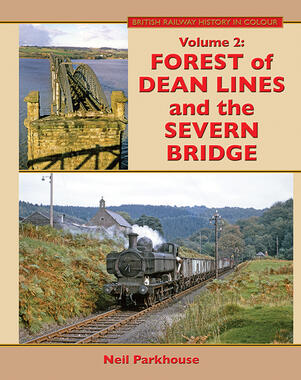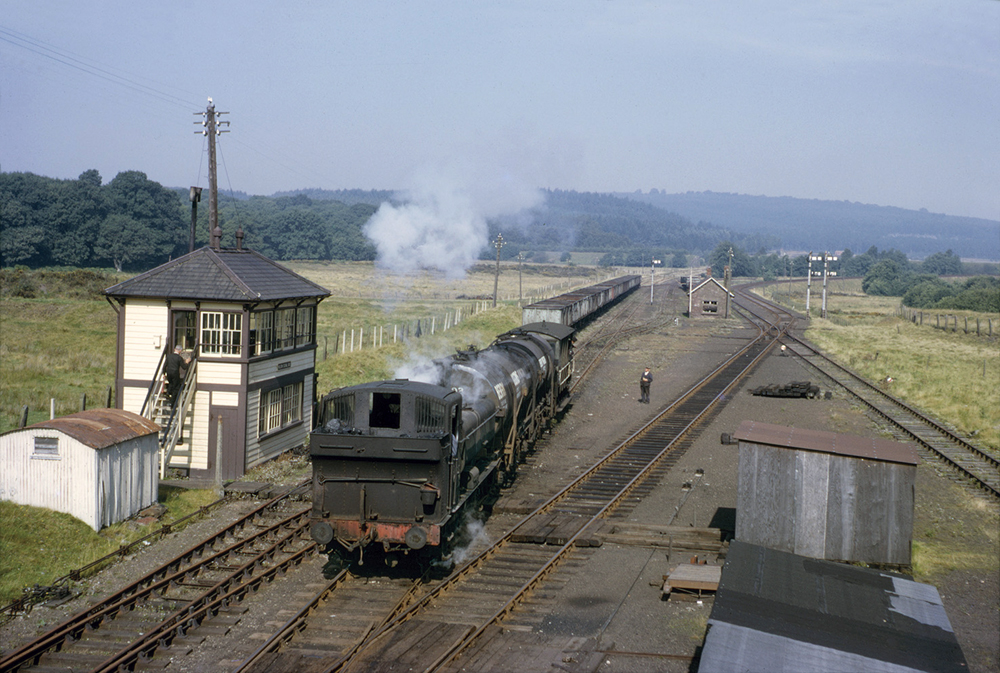Forest of Dean Lines and the Severn Bridge

Forest of Dean Lines and the Severn Bridge
Neil Parkhouse
328 pages. 275x215mm. Printed on gloss art paper, casebound with printed board covers.
ISBN13 : 9781899889983
£40.00
Neil Parkhouse
328 pages. 275x215mm. Printed on gloss art paper, casebound with printed board covers.
ISBN13 : 9781899889983
£40.00
This is the fourteenth in a series of books depicting the first 25 years of British Railways, and the first to concentrate on a single line. It covers the Somerset & Dorset, a line which captured the imagination of enthusiasts out of all proportion to its size and importance, and achieved cult status. Most attention was on the 26¼ miles between Bath and Evercreech Junction. In contrast, the line south of Templecombe to Bournemouth was very much a poor relation with enthusiasts. Except for summer Saturdays when through holiday trains ran, the Somerset & Dorset was essentially a secondary line with a reasonable amount of goods and coal traffic on the northern section. We hope to have struck a reasonable balance between the two aspects of this rather Jekyll and Hyde line.


Forest of Dean Lines and the Severn Bridge - Sample Images

By the date of this view, looking northwards from Letcher's Bridge on 22nd September 1965, the signal box had been repainted in Western Region chocolate and cream livery. Having collected the token for the Whimsey Branch from the driver of No. 4689, signalman Len Roberts climbs the steps back up to his often lonely outpost. With the Bilson Junction to Bullo Junction token safely on board instead, the train will now head back down the branch. The rake of mineral wagons beyond are empties bound for Northern United, so the consist here is just three Berry Wiggins tanks and a brake van. The guard exchanges a word or two with the yard man before departure. Note the permanent way (pw) huts in the right foreground, both of which housed motor inspection trolleys used by the Cinderford gang. The short derelict siding behind had been used to hold the spare auto trailer between services; there was an accident here in 1914, when the two trailers of the auto train were shunted through the end of the siding and hit the arch which was later filled in. Bilson yard is still recognisable and relatively unspoilt today, although a water treatment works has been built on the left; many of the wooden fence posts seen here still stand sentinel on either side. Bill Potter/KRM

Whilst the nostalgic pull of the steam locomotive remains as strong as ever, there is now a growing body of interest in the green diesel era on British Railways and in the early classes of diesels, many of which failed to survive beyond the early to mid 1970s. There are numerous evocative views of various types of green liveried diesels at work in the Forest within these pages but this lovely shot of NBL-built Type 2 diesel hydraulic No. D6319 shunting Marsh Wharf sidings in glorious summer sunshine on 10th June 1968, is undoubtedly one of the best and can only further fuel this interest. No. D6319 was delivered new to Plymouth Laira (83D) on 11th April 1960 and was withdrawn on 22nd May 1971. It was cut up at Swindon Works. Having shunted the empty ballast hoppers into position on the centre road, the locomotive will then collect the rake of steel mineral wagons on the left, which are loaded with free mined coal. The man on the left is operating the point levers. Bill Potter/KRM
